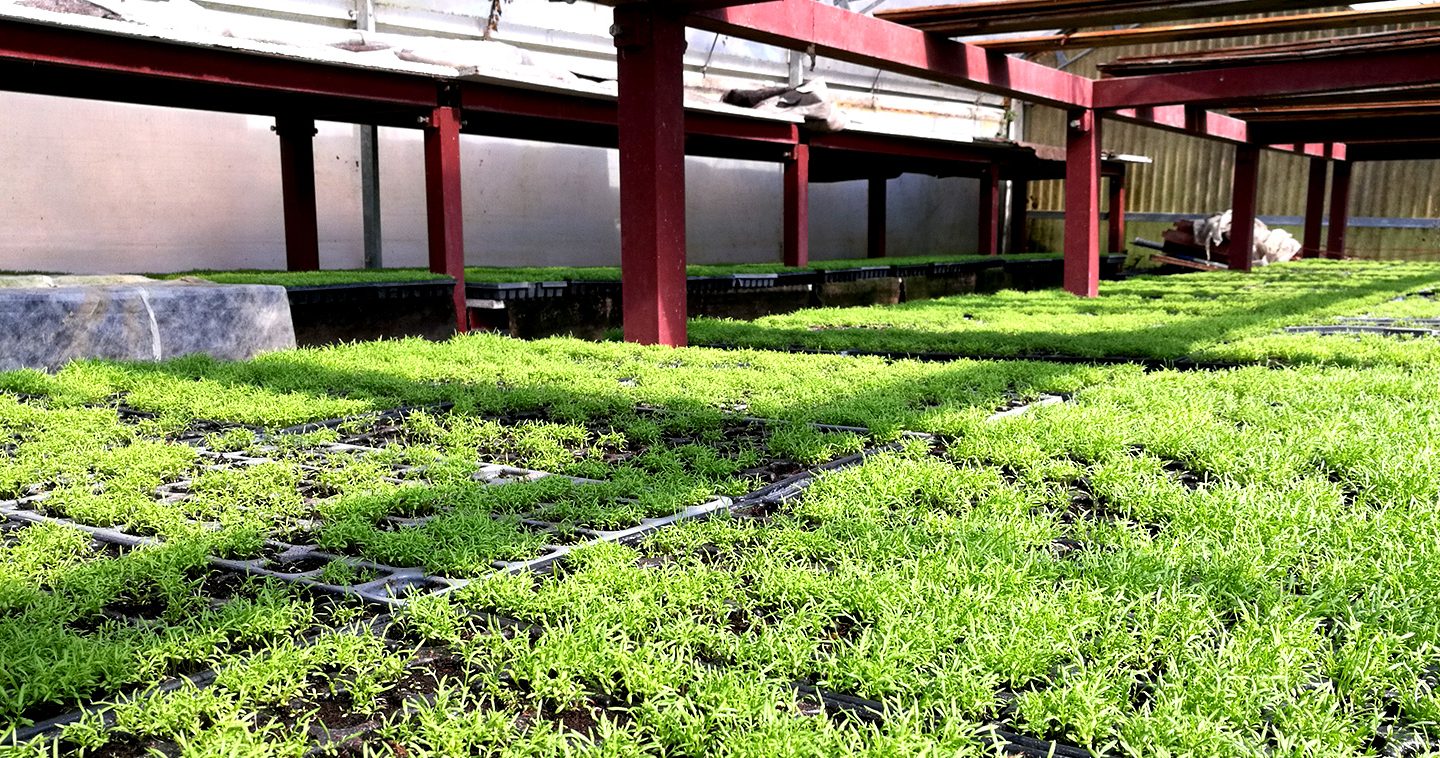Elder - The protecting shrub
| German name | Holunder |
| English name | Elder |
| French name | Sureau |
| Italian name | Sambuco |
| Stock plant | Sambucus nigra L. |
| Plant family | Caprifoliaceae |
| Greek/Latin explanation of the name | The origin of the genus name “Sambucus” is unclear. The species name “nigra” means “black” and refers to the black elderberries. |
| Used plant parts | Flowers and berries |
| Origin | Indigenous in all of Europe, also in Asia Minor, western Siberia and North Africa |
| Collection time | Flowers: June & July Berries: September & October |
| Occurrence | Edges of forests, fields and paths with nutrient-rich soils |
| Substances | Flowers: Up to 3.5% flavonoids, as glycosides of quercetin, camphor oil and isorhamnetin, also tannins, sterols and essential oil with more than 63 components.Berries: High content of anthocyanins, sambucyanin = red colorantstuff, which improves cell respiration, vitamins C, B1, B2, B6 and minerals (potassium, phosphorous, calcium). The raw berries irritate the stomach owing to their sambunigrin content, but cooking neutralises it. |
Nasturtium - Sparkling life fire
| German name | Kapuzinerkresse |
| English name | Nasturtium |
| French name | Capucine majeure |
| Italian name | Crecione indiano |
| Stock plant | Tropaeolum majus L. |
| Plant family | Tropaeolaceae |
| Greek/Latin explanation of the name | The genus name “Tropaeolum” comes from the Greek word “tropaion”, which can be translated as “trophy”. The form of the leaves is associated with the combat shields from old times of war. The Latin species name “majus” means “big” while the German name “Kapuziner” comes from the head cobering of Capuchin monks, the “kresse” from the sharp taste, derived from the old German word “cresso” = sharp. |
| Used plant parts | Herb |
| Origin | Peru |
| Collection time | During the flowering period, lasting from May until autumn |
| Occurrence | Loves sunny meadows, fallow land, edges of fields and paths |
| Substances | Mustard oil glycosides (glucosinolates), from which the active benzyl mustard oil is formed through enzymatic cleavage, 100 g of fresh plant contain up to 320 mg of vitamin C. It also contains carotinoids. |
Lime - The peacemaker
| German name | Linde |
| English name | Lime |
| French name | Tilleul |
| Italian name | Tiglio |
| Stock plant | Tilia spec. |
| Plant family | Malvaceae |
| Used plant parts | Flowers with the bract |
| Origin | Europe to western Siberia and Near East |
| Collection time | The summer linden flowers from the end of May to early July, those of the winter lime in August |
| Occurrence | Mixed forests or selectively on prominent und exposed places |
| Substances | Essential oil, farnesol, saponins, flavone glycosides, flavonoids, tannin, tannic acid, mucins |
Thyme - Powerful fragrance dispenser
| German name | Thymian |
| English name | Herb of thyme |
| French name | Thym |
| Italian name | Timo |
| Stock plant | Thymus vulgaris L. |
| Plant family | Lamiaceae |
| Greek/Latin explanation of the name | The name “thyme” is derived from the Latin word “thymus” which in turn comes from the Greek “thymos”, translated as having the spirit and courage. “Thymos” is also associated with “smoke” since it is related to the Latin “fumus” – smoke in the sense of thymol’s germicidal property. |
| Used plant parts | The herb and the leaves and flowers stripped off the stems |
| Origin | Central and southern Europe |
| Collection time | May to August; immediately when it starts flowering, the stalk is harvested together with the flowers and leaves and dried in the shade below 35 °C (95 °F) |
| Occurrence | Prefers Mediterranean climate, colonises open dry grassland, loves limestone soils and sunny locations |
| Substances | Essential oil with thymol and carvacrol as main substances as well as p-cymol, linalool and other monoterpene flavonoids as well as antioxidative biphenyls |
Gentian - The archaic root power
| German name | Gelber Enzian |
| English name | Gentian |
| French name | Gentiane jaune |
| Italian name | Genziana |
| Stock plant | Gentiana lutea L. |
| Plant family | Gentianaceae |
| Greek/Latin explanation of the name | The genus name comes from Latin and named for Genthios, the last king of the Ilyrian Labeats, who valued the plant as bitter-tasting “medicine”. |
| Used plant parts | Root |
| Origin | Indigenous in all of Europe |
| Collection time | In the spring or autumn; at least 10-year-old plants |
| Occurrence | On mountain meadows at an altitude of 750-2500 m (2460-8200 ft) |
| Substances | Iroid glycosides (bitter compounds) such as amarogentin, gentiopicroside, swertiamarin as well as mono- and oligosaccharides, also pectins, but no starch, in addition yellow-staining xanthone derivatives and traces of essential oil |
Lemon balm - Balsam for the heart and abdomen
| German name | Melisse, Zitronenmelisse |
| English name | Lemon Balm, Melisse |
| French name | Mélisse |
| Italian name | Melissa |
| Stock plant | Melissa officinalis L. |
| Plant family | Lamiaceae |
| Greek/Latin explanation of the name | The genus name “Melissa” is a medieval new formation of the Greek word “melissophyllon”, translated as “bee leaf”. Another explanation relates to the German name “Zitronenmelisse”, derived from the translation of honey from the Greek term “meliteia/ mélitos”. The species name “officinalis” means that this lemon balm species is used at the chemist’s. |
| Used plant parts | Leaves and the essential oil |
| Origin | Especially France and Spain as well as western Asia |
| Collection time | Leaves before the flowering period (March to May) |
| Occurrence | Lemon balm loves nutrient-rich locations, prefers clayey sand without waterlogging and a high humus content |
| Substances | Mostly essential oil with the main components of citral, citronellal, rosmarinic acid and flavonoids |
Dandelion - The sunny detoxifier
| German name | Löwenzahn |
| English name | Dandelion |
| French name | Dent de lion, „pissenlit“ |
| Italian name | Tarassaco |
| Stock plant | Taraxacum officinale |
| Plant family | Asteraceae |
| Greek/Latin explanation of the name | The genus name “Taraxacum” is based on the Greek terms “taraxis = inflammation” and “akéomei = I cure”, which indicate the medicinal use of the plant. Other sources derive “Taraxacum” from the Arabic “Tharakhchakon”, which describes a plant with yellow flowers. The origin of the name “Löwenzahn”, in turn, refers to the shape of the leaf, which resembles a lion’s teeth. |
| Used plant parts | The whole plant or only the herb, leaves and flowers. |
| Origin | Indigenous in all of Europe |
| Collection time | The whole plant, including the root, when it is flowering from May until October; the root in the spring from April to May before it forms flowers or in autumn after flowering: September & October |
| Occurrence | On meadows, edges of paths, fallow land; up to 2800 m (9186 ft) |
| Substances | Sesquiterpene lactone bitter compounds such as taraxacin and triterpenes; also phytosterols and high inulin and potassium content |
Artichoke - The liver’s friend
| German name | Artischocke |
| English name | Artichoke |
| French name | Artichaut |
| Italian name | Carciofo |
| Stock plant | Cynara cardunculus |
| Plant family | Asteraceae |
| Greek/Latin explanation of the name | The genus name “Cynara” indicates a certain species of artichoke found on the Greek island of Kinara. At most, “kynara” (whose translation means “dog”) could be based on the pointed leaves resembling a dog’s teeth. “Cardunlucus” is the Latin diminutive meaning “little thistle”. |
| Used plant parts | The fleshy bracts, including the receptacles, are eaten as vegetable. The leaves have medicinal applications, especially for digestive symptoms since the substances promote the flow of bile. There are also studies proving a cholesterol-lowering effect. |
| Origin | Southern Europe, North Africa and the Canary Islands |
| Collection time | The flower bud as vegetable in June and July shortly before blossoming, the leaves of the basal rosette after harvesting the flower bud. |
| Occurrence | Mediterranean region, South America and California. |
| Substances | Bitter compounds, like the sesquiterpene lactone cynaropicrin, are present only in the leaves; subsequently flavonoids such as luteolin and cynarosid as well as phenol carboxylic acids such as cynarin and chlorogenic acid |
Devil’s claw - The African rheumatism root
| German name | Teufelskralle |
| English name | Devil’s claw |
| French name | Griffe du diable |
| Italian name | Artiglio del Diavolo, Harpagofito |
| Stock plant | Harpagophytum procumbens DC. Ex Meisn. |
| Plant family | Pedaliaceae |
| Greek/Latin explanation of the name | The genus name “Harpagophytum” is derived from the Greek root word “harpagos”, translated as “grappling hook”, which refers to the barbs on the fruit that becomes woody. The species name “procumbens” indicates the prostrated shrub. The German name “Teufelskralle” relates to the shape of the ripe seed capsules that have sprung open. |
| Used plant parts | The roots or bulbous secondary roots. The harpagosides in the roots are readily used in medications due to their anti-inflammatory, decongestant and pain-relieving effect. Also used frequently in osteoarthritis, as they inhibit the enzymes that break down protein and thus protect the joint cartilage. Numerous studies have proven the efficacy of this medicinal plant. |
| Origin | Namibia, South Africa and western Botswana |
| Collection time | Varies |
| Occurrence | Savanna and grass vegetation, on red, sandy soils or in alluvial land areas |
| Substances | Iridoid glycosides with harpagoside as main component, plus flavonoids such as camphor oil and luteolin, as well as unsaturated fatty acids, cinnamic and chlorogenic acid |
Incense - Tears of the gods
| German name | Weihrauch |
| English name | Olibanum, Incense |
| French name | Encens Boswellia |
| Italian name | Incenso |
| Stock plant | Boswellia serrata Roxb. Ex Colebr. |
| Plant family | Burseraceae |
| Explanation of the name | The resin of the Olibanum tree is highly valued in many cultures and burned in ceremonial acts. Used on the one hand to disseminate a fragrance, but also to drive away “evil spirits” (germs) on the other hand. The Bible mentions that the Three Wise Men brought the aromatic resin frankincense as a gift. |
| Used plant parts | Resin |
| Origin | India; various species also come from Africa |
| Collection time | Extracted by scratching the bark |
| Occurrence | Dry areas and barren landscapes up to 1200 m (3937 ft) |
| Substances | 50 to 70% of the resins have the main component beta-boswellic acid, in addition mucins and essential oil |
Peppermint - The cooling plant power
| German name | Pfefferminze |
| English name | Peppermint |
| French name | Menthe povrée |
| Italian name | Menta piperita |
| Stock plant | Mentha x piperita L. |
| Plant family | Lamiaceae |
| Greek/Latin explanation of the name | The genus name “Mentha” is a borrowing from the Greek “Minthe”. According to a legend pased on by Ovid, the nymph “Minthe” stole the heart of the underworld god Hades. This displeased his wife Persephone, who transformed the nymph into the plant Minthe. The species name “piperita” is derived from the Latin term “piper” or “pepper-like”. |
| Used plant parts | Leaves and the pure, essential peppermint oil |
| Origin | Europe and North America |
| Collection time | March to May before the flowering period |
| Occurrence | Wet, nutrient-rich soils; semi-shady, slightly sunny locations |
| Substances | Essential oil with the main components menthol and menthone |
Golden root - Energy for those tired from stress
| German name | Rosenwurz |
| English name | Golden root |
| French name | Orpin rose |
| Italian name | Legno rodio, rodiola |
| Stock plant | Rhodiola rosea L. |
| Plant family | Crassulaceae |
| Greek/Latin explanation of the name | The genus name “Rhodiola” is derived from the Greek word “rhodos”, translated as rose-coloured, rose-like or also “the odour of the root”. The species name “rosea” comes from the Latin term “rosa” or rose. |
| Used plant parts | Root and root stock (radix and rhizome) |
| Origin | Russia, Scandinavia and Iceland |
| Collection time | Spring and autumn |
| Vorkommen | On wet soils in the mountaineous regions of Eurasia and North America up to 2300 m (7545 ft). |
| Substances | Phenylpropanoids: rosavin, rosin and rosarin as well as various flavonoids, essential oils and organic acids |
Purslane - The wondrous vegetable of our ancestors
| German name | Portulak |
| English name | Purslane |
| French name | Pourpier |
| Italian name | Porcellanna comune |
| Stock plant | Portulaca oleraceae L. |
| Plant family | Portulaceae |
| Explanation of the name | Although the origin of the name purslane is unknown, the plant was known and valued in old Egypt and Europe – not only as vegetable but as vitamin supplier too. |
| Used plant parts | Young branches with leaves |
| Origin | No longer traceable, nowadays wild and cultivated in Europe |
| Collection time | April & May |
| Occurrence | In warm, temperate zones; on nutrient-rich, loose sandy-loamy soils |
| Substances | Omega-3 fatty acids, linolenic acid, vitamin C and alpha-tocopherol as well as potassium and calcium |
St John‘s wort – The bright anti-depressant
| German name | Johanniskraut |
| English name | St John’s wort |
| French name | Millepertuis |
| Italian name | Iperico |
| Stock plant | Hypericum perforatum L. |
| Plant family | Hypericaceae |
| Explanation of the name | The name St John‘s wort comes from the fact that the plant flowers around the day of St John (i.e. 24 June). As soon as summer starts, St John‘s wort starts brightening up the edges of paths and slopes with its bright, intense yellow flowers. |
| Used plant parts | Both the flowering herb and only the flowers. Therefore, St John‘s wort is always associated with sun and – in the figurative sense – with happiness as well. The power of St John‘s wort is capable of brightening up the gloomy and therefore somewhat depressive time of the year. It is therefore not surprising that both Paracelsus and modern orthodox medicine recommend St John‘s wort for boosting the mood. |
| Origin | Namibia, South Africa and western Botswana |
| Collection time | End of June to September |
| Occurrence | Slopes, edges of paths, landfills |
| Substances | Above all hypericin, hyperforin as well as flavonoids and bitter compounds |
Hawthorn - The mild heart strengthener
| German name | Weissdorn |
| English name | Hawthorn |
| French name | Aubépine |
| Italian name | Biancospino |
| Stock plant | Crataegus monogyna, Crataegus laevigata |
| Plant family | Rosaceae |
| Explanation of the name | The name hawthorn can be easily understood after seeing the thorny bush with its magnificent, white flower dress. |
| Used plant parts | Both the flowers, which appear in May and June, and also the leaves or fruits, which ripen in August and September. Hawthorn especially provides a good service for nervous heart symptoms. As mild, heart-strengthening remedy, both low and high blood pressure benefits from the compensatory effect. |
| Origin | Europe |
| Collection time | Entire growing season |
| Occurrence | Edges of paths and hedges |
| Substances | Especially responsible for the pharmacological effect are the polyphenols, crataegus lactone (crataegus acid), oxyacanthin (a glycoside) and essential oil. |
Milk thistle seeds - The mild heart strengthener
| German name | Mariendistel |
| English name | Milk thistle |
| French name | Chardon – marie |
| Italian name | Cardo mariano |
| Stock plant | Carduus Marianus, Silybum marianum |
| Plant family | Asteraceae |
| Explanation of the name | The milk thistle has large, dark green leaves, which closely hug the soil as rosetta. White lines can be seen on it, exactly as if milk had been poured over the leaves. This inspired the legend that a few drops of the milk of the Holy Mother Mary fell on thistle leaves during breastfeeding. They are seen even today in the typical leaf drawing. |
| Used plant parts | Typically, the seeds of the milk thistle are used. They contain the main active ingredient silimarin or silibinin, which has a pronounced liver-protecting effect and is even used successfully in liver poisonings. Numerous scientific studies have impressively demonstrated the efficacy and excellent tolerance of this medicinal plant. |
| Origin | Mediterranean region |
| Collection time | August and September |
| Occurrence | Edges of paths und fallow areas |
| Substances | Above all silibinin, also silybin, the pharmacologically strongest active substance of the active ingredient complex silymarin, but also contains flavonoids, bitter compounds and biogenic amines. |





